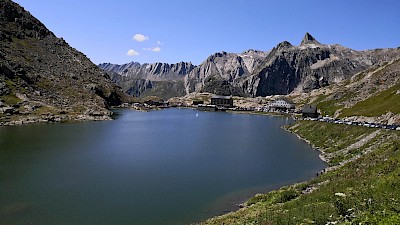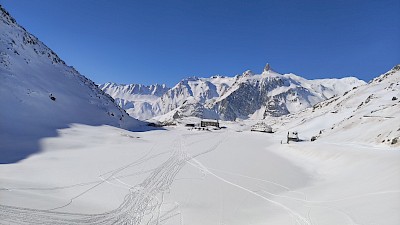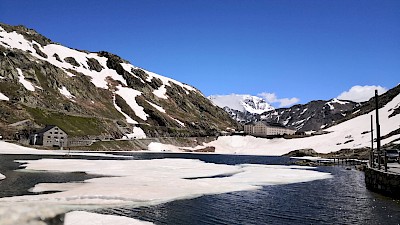

Great St. Bernard Pass
2.473 m
The Great St. Bernard Pass, at an altitude of 2,473 meters, has played a fundamental role in the relations between the north and south of Europe since ancient times. Legions of Romans, barbarian tribes, Saracens, Holy Roman Emperors, Popes, Crusaders, and even Napoleon Bonaparte and his army have passed through this pass. Even in the past, a Roman road, a mansio (a post station), and a temple were recognized on the pass, known as Summus Poeninus to the Romans. Around 1050, Saint Bernard of Aosta founded a hospice there to assist pilgrims and travelers.
Today, the role of the Pass as a transalpine route has been replaced by the Great St. Bernard Tunnel, which spans 6 km and connects the Valais region with the Aosta Valley. Excavations began on the Italian side in 1958, and, on the 19th of March 1964, the first road tunnel through the Alpine barrier was inaugurated.
The Pass remains a tourist attraction and an alternative route from June to October when it is accessible.
The millennium-old Hospice still welcomes tourists and travelers who can visit the chapel with its treasure and the adjacent museum, which houses interesting archaeological artifacts and historical objects, as well as flowers and insects collected by the monks.
The symbol of the Pass is the St. Bernard dog. Gentle and large, they were used by the monks as companion dogs and primarily to rescue lost travelers, which spread their fame as rescue dogs. The Fondation Barry, a Swiss association, breeds these dogs to preserve the breed, and every summer, they bring some dogs, usually with their puppies, to the Pass where visitors can see them next to the museum.
However, the Pass is not only the cradle of the history of this area, it is also a place of breathtaking nature. The Hospice and other structures are reflected in a small and beautiful alpine lake, and the panorama of the surrounding mountains is wonderful.
Due to its altitude and exposure, the Pass is a destination for ski mountaineering until late spring. In the summer, besides being accessible by car, it is a popular destination and starting point for numerous hikes and excursions.







